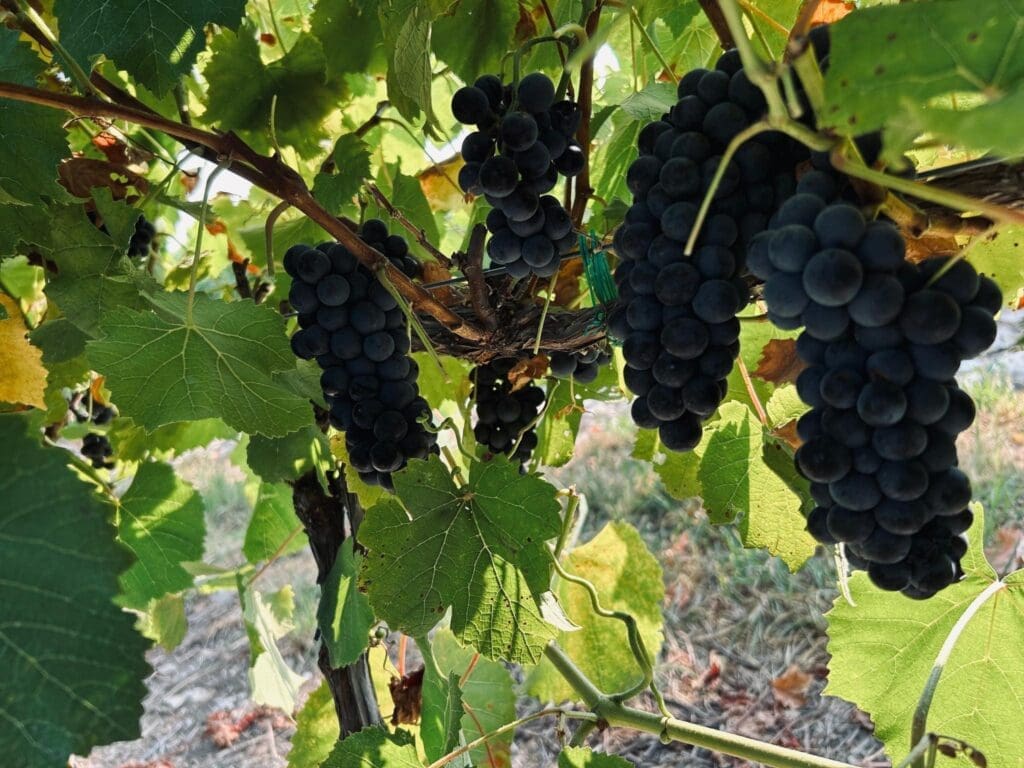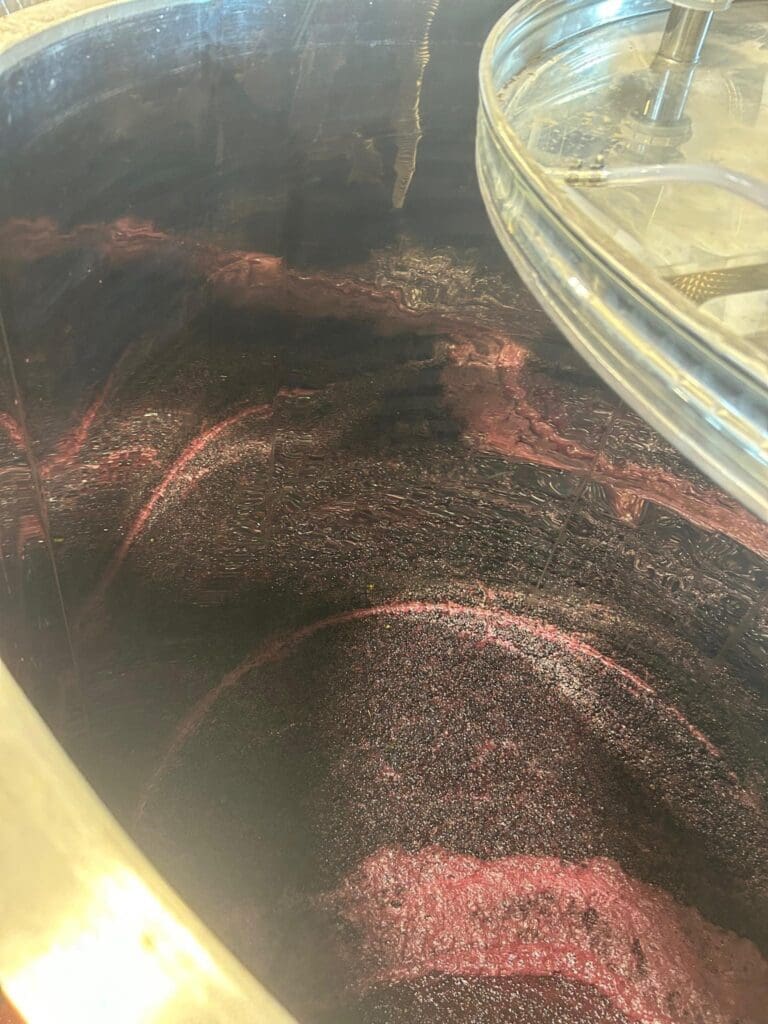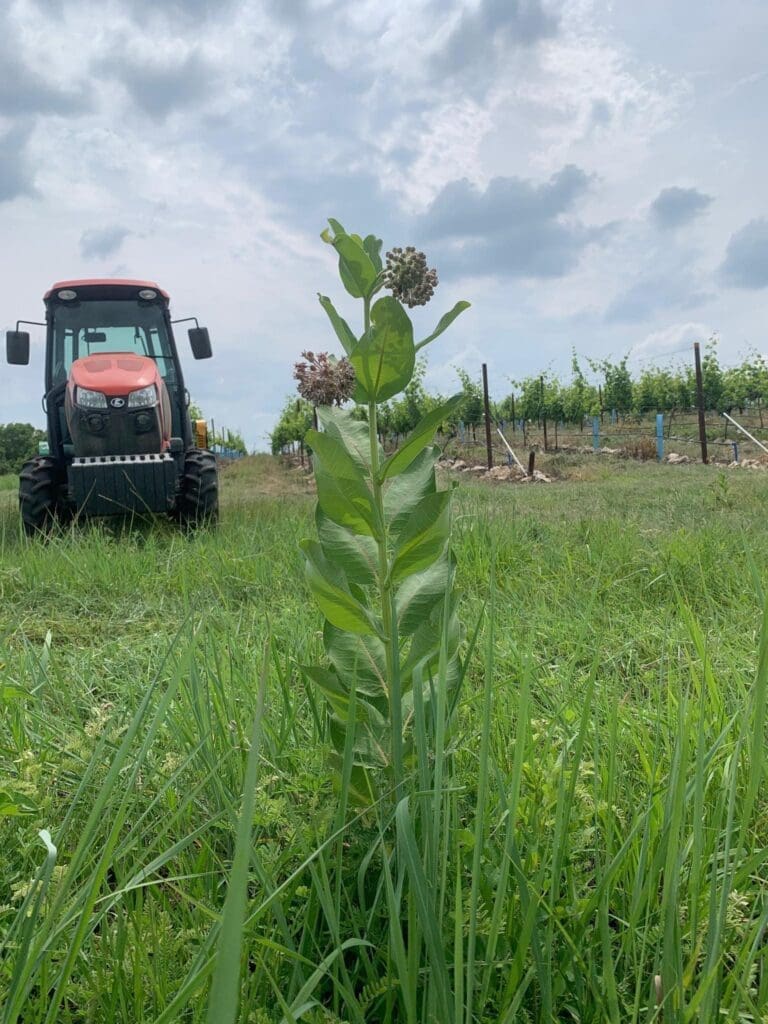By Payton Tholstrup
When Holly Logsdon visited family in Kansas in October of 2018, she also visited Liquid Art Winery in Manhattan, KS. Amazed by the magic of it all, she began thinking about how cool it would be to work there. Fast forward to now and her dreams have come true. Now she is a Viticulturist at the winery, which means she oversees growing the grapes.
Originally from Colorado, Logsdon grew up spending time outside and enjoying nature. One of the most memorable parts of her childhood was going to her father’s job sites; his company did a forest fire reclamation project that had a profound impact on her. “My mom has an incredible green thumb, and her perennial garden was the coolest backdrop for playing as a child. So, I’d say I come by my love of plants honestly,” she shared.
During her college years, majoring in horticulture was a no brainer. She interned at a wholesale greenhouse which set her on the path to greenhouse growing. On the side, she did consultation work and landscape designs in the Denver Metro area. Native plants were one of her main focuses. She also worked for a tree business where she did fire mitigation, pruning, and tree removal.
After moving to Kansas to be closer to family, she worked in a local nursery and garden center. In the meantime, she still dreamed about growing grapes and began throwing herself into viticulture wholeheartedly. In January of 2023, that dream finally came true and she began working at Liquid Art Winery and Estates.

Liquid Art Winery and Estates was founded in 2014 by Danielle and David Tegtmeier, two Kansas natives. The estate has a tasting room complete with wine, cider made from rotating taps, flatbread pizza, and charcuterie boxes. They also have multiple event spaces; both indoor and outdoor. In 2023, they completed two new projects; a barrel room to host events and rent out, and a stone amphitheater built into the vineyards.
Growing grapes and making wine is quite the process. The first step is finding a location that offers ideal conditions for growing grapes (slope, direction, and soil should all be considered). Choosing a grape variety best suited for that area is also important. Establishing grapes takes four years before the first harvest. During that time, they require steep wet/dry cycles to get the roots well established. Pruning is also very important and requires lots of labor that is mostly done by hand. Wildlife and insects find grapes tasty just like humans do, so Liquid Art uses cultural practices to mitigate pests as much as possible.

When asked what a typical day looks like as a viticulturist, Logsdon said it really depends on the season and weather. In late winter, she makes a road map of how she would like the season to go based on how the previous years went and what areas need more attention. Details get worked out, and maintenance is done on the equipment.
During early spring, Logsdon is typically driving the tractor with a pre-pruning attachment. Her crew follows behind and hand prunes all 20 acres and the rest of the satellite vineyards. A lot of time is spent walking the vineyards. “The vines are great at telling you what they need,” she explained.

Summer consists of more tractor time with various sprays being used, and vineyard and equipment maintenance is conducted once again.
Fall is the finish line and is the most exciting because it’s time to harvest. When that season gets closer, Logsdon takes samples to test the grapes for pH and Brix or sugar content to determine the perfect time to harvest. A typical harvest day is over 13 hours long and involves lots of coordination. “When harvest is over, it’s a bittersweet relief, and I move on to collecting data and preparing for winter,” she said.
At the winery, the winemaker takes over and the rest of the process just depends on the type and style of wine. The grapes are dumped into the crusher/destemmer machine and pumped into a tank. If the grapes are red, they sit on their skins and begin fermenting. White grapes will get pressed and then the juice is fermented. Some wines take weeks to bottle, while others take years. “It has been said 80% of wine is made in the vineyard and the last 20% is finished in the winery,” Logsdon said.

The vines are her favorite part of the job. “Grape vines are just incredible, the depth of the roots and their ability to grow on steep hillsides in limestone rock where other plants struggle. Each grape variety has its own quirks too based on its genetics; that piece alone is a lifetime of study. I’ll never be done learning, and that is a wonderful prospect.”














